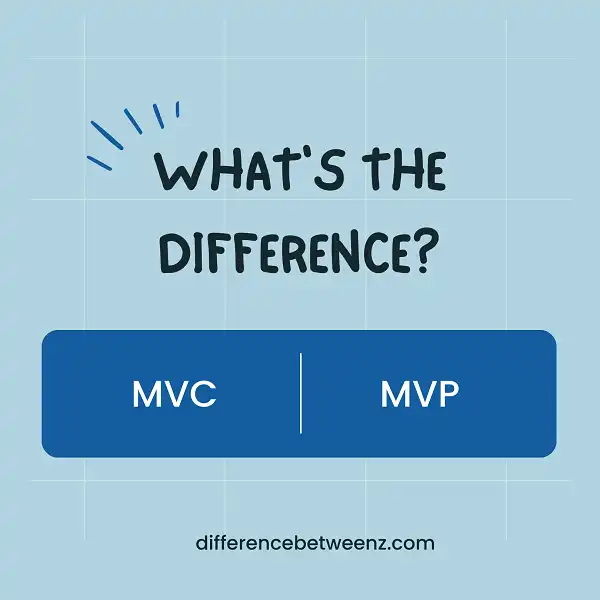MVC and MVP are two different architectural patterns that are used when developing web applications. Both MVC and MVP have their own benefits, but which one is the best for your project depends on your specific needs. Here we will compare and contrast MVC and MVP, so you can decide which pattern is right for you.
What is MVC?
MVC is an acronym for Model View Controller. MVC is a software design pattern that separates an application into three main components: the model, the view, and the controller. The model manages the data of the application. The view displays the data to the user. The controller handles user input and sends commands to the model and view. MVC is a popular design pattern because it helps to keep an application organized and easy to maintain. It also helps to make an application more scalable. MVC can be used for web applications or desktop applications. MVC is not limited to any one programming language; it can be implemented in languages such as Java, PHP, Ruby on Rails, and ASP.NET.
What is MVP?
MVP is a software development model in which the user interface is decoupled from the business logic. MVP is an evolution of the MVC (Model View Controller) pattern and is well suited to building user interfaces in Android. The key difference between MVP and MVC is that MVP separates the view from the presenter, whereas in MVC, the view is tightly coupled to the controller. MVP also introduces the concept of a view lifecycle, which makes it easier to manage the UI. As a result, MVP can improve code quality and make it easier to develop and test user interfaces.
Difference between MVC and MVP
MVC and MVP are two popular design patterns used in software development. MVC stands for Model-View-Controller, while MVP stands for Model-View-Presenter. Both patterns are based on the principle of separation of concerns, which dictates that code should be organized into distinct sections based on functionality. MVC and MVP are both commonly used in UI development, as they allow developers to create modular code that can be easily reused and tested. MVC is the more traditional of the two patterns, and it typically uses a controller to mediate between the view and the model. MVP is a newer pattern that uses a presenter to play this role. Although both MVC and MVP have their own benefits and drawbacks, they are both widely used in UI development due to their flexibility and ease of use.
Conclusion
In order to understand the difference between MVP and MVC, it is important to first understand what each term means. MVP stands for Minimum Viable Product, while MVC stands for Model View Controller. An MVP is a product with just enough features to satisfy early customers. It is typically launched very early in the development process so that feedback can be used to make further changes.
On the other hand, an MVC refers to a design pattern that helps you split your application into three parts: model, view, and controller. The model represents the data of the application, while the view displays this data to the user. The controller manages user interactions and updates the model when necessary.


